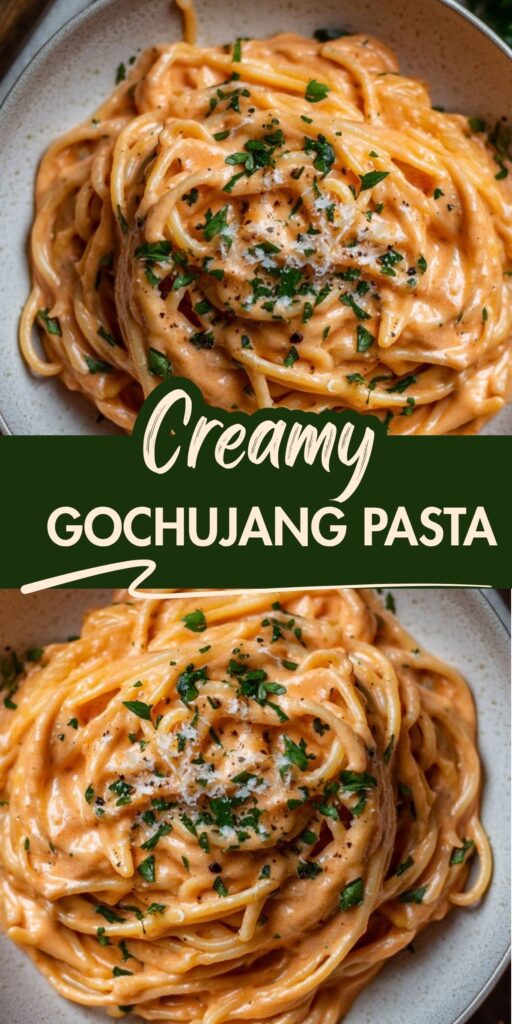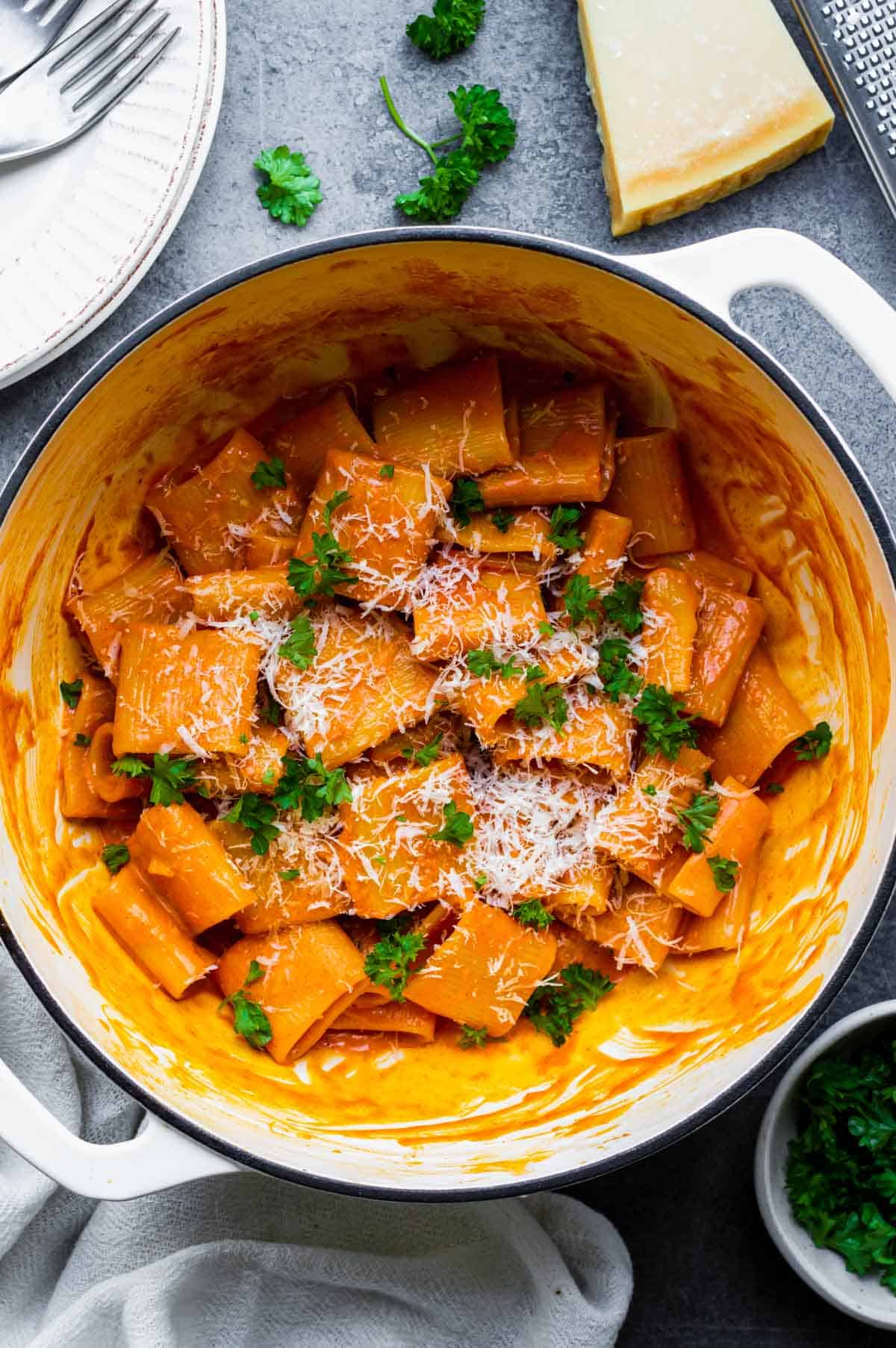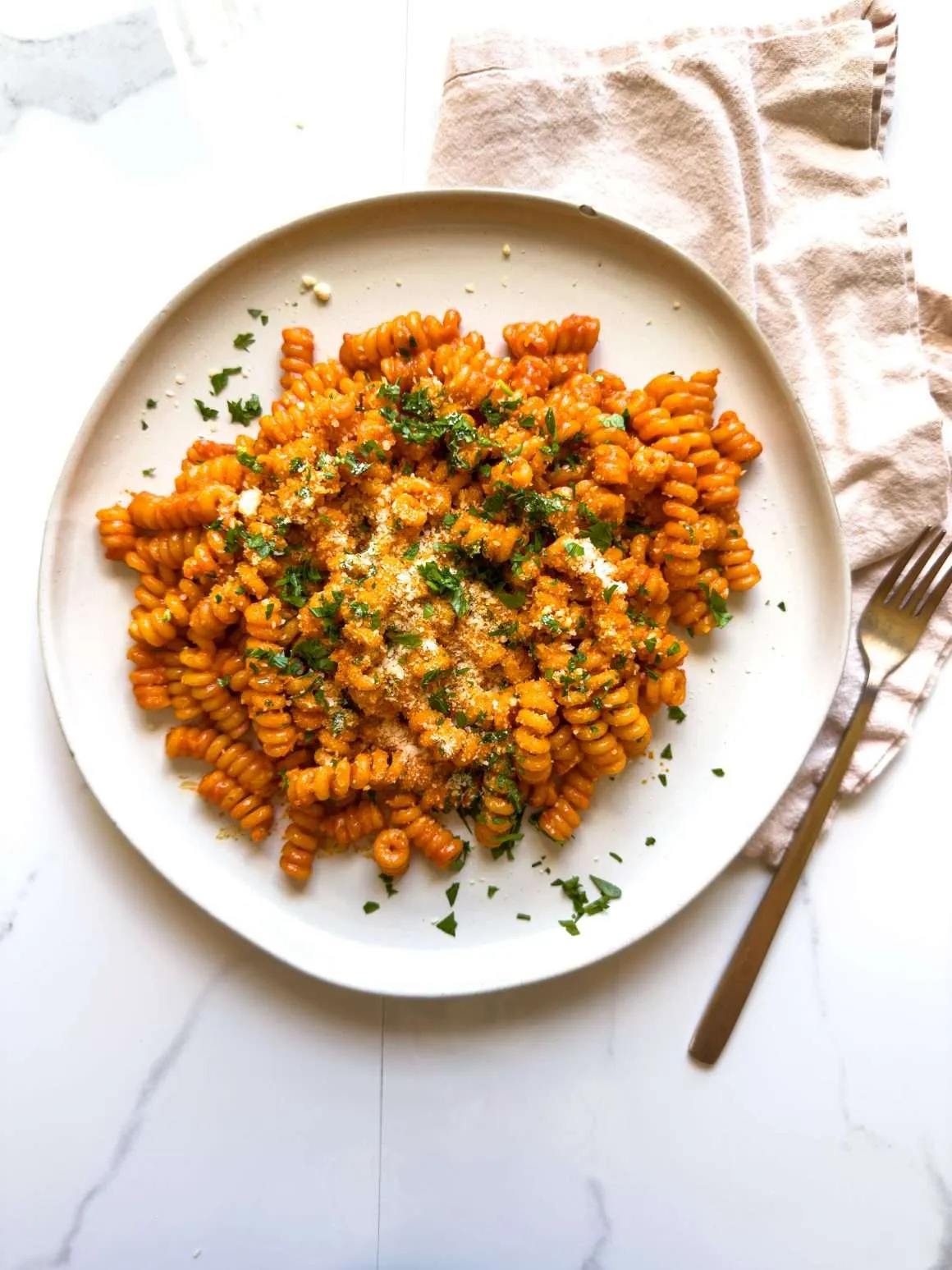Note
Creamy Gochujang Pasta is a bold, comforting dish that marries Korean spice with Italian-style indulgence. Gochujang, a fermented red chili paste, brings depth, heat, and umami, while the creamy base balances it out with a rich, velvety texture.
Whether you're making it for a weeknight dinner or a dinner party centerpiece, the following tips and serving tricks will help you elevate your creamy gochujang pasta to restaurant-worthy levels.
1. Balance the Flavors
Gochujang has a strong, spicy, slightly sweet, and tangy flavor. To create harmony in your pasta:
- Use cream or coconut milk to temper the heat and smooth the edges.
- Add a splash of soy sauce or fish sauce for depth and saltiness.
- Incorporate a sweet element, such as a teaspoon of honey or brown sugar, to round off the umami punch.
- Finish with acidity, like a squeeze of lime or lemon juice, to brighten the dish and cut through the creaminess.
2. Choose the Right Pasta
Not all pastas are created equal for creamy sauces. Go for:
- Long, thick noodles like fettuccine, bucatini, or tagliatelle to soak up the sauce.
- Ridged shapes like rigatoni or penne for those who prefer short pasta—they hold creamy sauces well.
- Cook your pasta al dente, and always reserve some pasta water to help emulsify the sauce later.
3. Enhance the Creaminess
While heavy cream is traditional, alternatives include:
- Full-fat coconut milk for a dairy-free version with a hint of sweetness.
- Cream cheese for extra richness and tang.
- Cashew cream for a vegan option with a naturally creamy consistency.
Remember to whisk the sauce continuously and keep the heat medium-low to avoid curdling.
4. Add Texture and Protein
Creamy gochujang pasta shines with the right add-ins:
- Sautéed mushrooms, baby spinach, or blistered cherry tomatoes add both color and bite.
- Crispy bacon, pancetta, or grilled shrimp offer savory contrast.
- For a vegetarian boost, consider tofu crumbles or tempeh strips tossed with sesame oil and soy sauce.
Nuts like toasted cashews or slivered almonds can also give it crunch and nuttiness.
5. Garnish Strategically
Don’t skip the finishing touches—they add flavor, freshness, and visual appeal:
- Fresh herbs: Chopped scallions, cilantro, or Thai basil brighten the dish.
- Sesame seeds or crushed peanuts for texture and Asian flair.
- Grated parmesan or nutritional yeast for an umami kick, depending on dietary preference.
- A drizzle of chili crisp or garlic oil can add complexity and a hint of indulgence.
6. Serving Tricks for a Stunning Presentation
- Twirl pasta into a nest using tongs before plating for a professional look.
- Use shallow pasta bowls—they keep the sauce contained and showcase the dish better.
- For larger gatherings, serve on a warm platter, garnished with herbs and toppings in the center for guests to help themselves.
7. Make It Ahead—Smartly
Creamy gochujang pasta can be made in advance with a few precautions:
- Cook pasta slightly under al dente so it doesn’t get mushy when reheated.
- Store the sauce separately and combine when reheating to retain the best texture.
- Reheat gently on the stovetop, adding reserved pasta water or a splash of cream to refresh the sauce.
Tips for Success
- Don’t skip the pasta water: It helps emulsify the sauce, making it creamy and clingy without being too thick.
- Adjust heat levels: Gochujang brands vary in spice. Start with less if you're sensitive to heat, and add more to taste.
- Protein boost: This dish pairs wonderfully with crispy bacon, sautéed shrimp, or marinated tofu. Just cook your protein separately and stir it in with the pasta at the end.
- Make it vegan: Use a plant-based cream and cheese, or go with full-fat coconut milk and nutritional yeast.
- Add veggies: Wilted spinach, mushrooms, or blistered cherry tomatoes can add freshness and balance.
Variations
- Gochujang Rosé Pasta: Add a splash of white wine after sautéing the aromatics and before the cream for a more French-inspired twist.
- Baked Gochujang Pasta: Pour the finished pasta into a baking dish, top with mozzarella, and broil for 5 minutes until bubbly and golden.
- Cold Gochujang Noodles: Use less cream and serve chilled with sliced cucumbers and sesame seeds for a Korean-style summer noodle dish.
Why You’ll Love This Dish
Creamy Gochujang Pasta strikes the perfect balance between East and West. It’s bold and spicy without being overpowering, thanks to the soothing cream. It’s indulgent yet simple, taking less than 30 minutes to make from start to finish. Whether you’re a spice lover or just looking to try something new, this dish delivers big-time flavor with minimal effort.
Give this recipe a try the next time you’re craving something out of the ordinary. It’s a surefire way to spice up your pasta night—with creamy, fiery deliciousness in every bite.
Final Thoughts
Creamy gochujang pasta is an ideal dish to showcase the bold complexity of Korean flavors with the cozy satisfaction of Italian comfort food.
With mindful preparation, ingredient balance, and a few visual tricks, you’ll create a dish that’s both flavorful and unforgettable. Whether served casually or dressed up for guests, it’s bound to impress.


 Stir in the gochujang and tomato paste. Cook for another 1–2 minutes to deepen the flavors. The paste should darken slightly and become fragrant. This step is key—it blooms the gochujang and releases its full umami power.
Stir in the gochujang and tomato paste. Cook for another 1–2 minutes to deepen the flavors. The paste should darken slightly and become fragrant. This step is key—it blooms the gochujang and releases its full umami power. Plate your pasta into bowls. Garnish with extra Parmesan cheese, cracked black pepper, chopped scallions, or herbs of your choice. Serve immediately.
Plate your pasta into bowls. Garnish with extra Parmesan cheese, cracked black pepper, chopped scallions, or herbs of your choice. Serve immediately.

